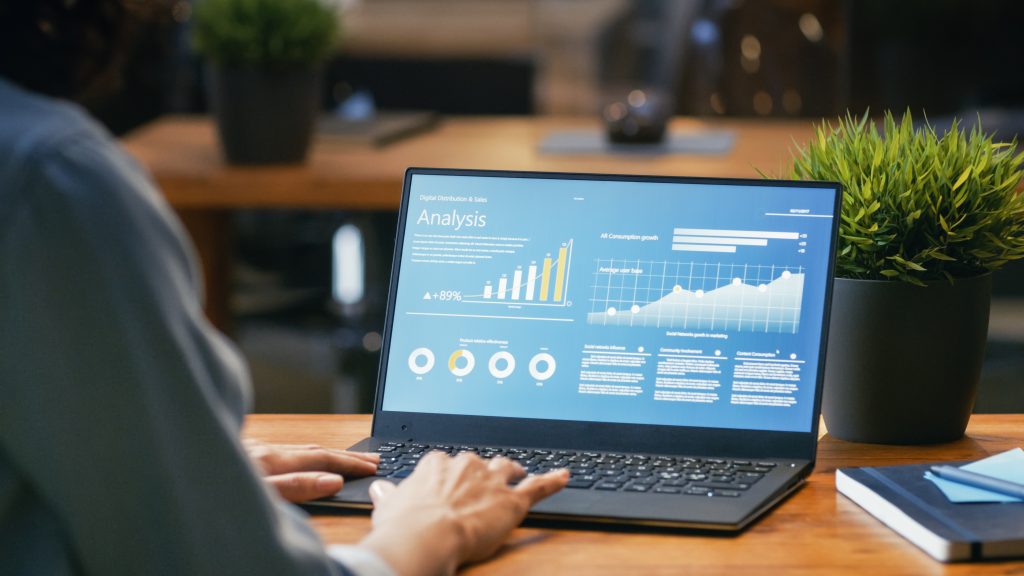
Becoming a data analyst is an exciting pathway for students interested in technology, problem-solving, and business. Companies rely on data analysts to turn raw information into actionable insights in today’s data-driven world.
If you’re wondering how to be a data analyst in the Philippines, this guide will explain everything you need to know—from what the role entails and why it’s in demand to the steps for starting your career.
What Is a Data Analyst?
A data analyst is a professional who collects, processes, and analyzes data to help organizations make better decisions. Simply put, a data analyst is a problem solver who turns data into meaningful insights for the business.
They use statistical techniques and tools to find patterns in datasets and then present their findings to stakeholders. For example, a data analyst might examine sales figures to determine trends in customer behavior or identify areas where a company can improve its operations.
The data analyst role is not only intellectually engaging but also offers competitive pay. In the Philippines, a data analyst’s salary is quite attractive for new graduates and experienced professionals alike. On average, the data analyst salary in the Philippines ranges from ₱33,000 to ₱44,000, according to Jobstreet.
Entry-level analysts may start on the lower end. Still, as you gain experience, your earning potential grows significantly – senior data analysts can earn up to ₱80,000 per month in top companies. (These figures can vary depending on factors like your industry, location, and level of expertise, but it’s clear that data analysis is a well-compensated field in the country.)
What Does Data Analyst Do?
A data analyst’s work can vary by industry, but the core responsibilities are similar across organizations. Essentially, they help a business answer questions and solve problems using data. What does data analyst do on a daily basis? Key tasks typically include:
Gathering and Organizing Data
Pulling data from various sources such as databases, spreadsheets, or surveys. This often involves using software tools to collect and structure large datasets for analysis.

Cleaning and Validating Data
Ensuring the data is accurate and free of errors or duplicates. Data analysts spend time on data cleansing so that analyses are reliable.
Analyzing the Data for Insights
Using statistical methods and software (like Excel, SQL, or Python) to find trends, patterns, and correlations in the data. They might perform calculations or apply models to interpret what the data is saying.
Creating Reports and Visualizations
Synthesizing data into reports or dashboards to communicate findings. This can involve charts, graphs, and presentations that make complex data easy to understand.
Presenting Findings to Stakeholders
Explaining the insights and recommendations to decision-makers (managers or clients). Good analysts don’t just crunch numbers – they translate data into actionable advice that can guide business strategy.
Collaborating with Teams
Data analysts often collaborate with other departments. They might liaise with data scientists, IT staff, or business managers to interpret data and address business questions. Teamwork and communication are big parts of the job.
To perform these duties effectively, a data analyst needs a mix of technical and soft skills. Strong analytical and mathematical abilities are a must – you’ll be dealing with numbers and statistical concepts regularly.
Technical skills are equally important: most data analysts are proficient in tools like SQL databases, spreadsheet software, and programming languages for data (such as Python or R). Familiarity with data visualization tools (e.g., Tableau or Power BI) is also common, as it helps in presenting insights clearly.
Beyond the technical side, critical thinking and problem-solving skills are key to figuring out what the data means. And since you’ll be reporting insights to others, communication skills are crucial – you should be able to explain complex findings in simple terms.
A good data analyst also has domain knowledge (understanding the industry or business context) and a keen attention to detail to ensure accuracy in their work.

Why Should You Consider Becoming a Data Analyst?
Choosing a career is a big decision. Here are a few compelling reasons why becoming a data analyst is worth considering, especially in the Philippines:
High Demand and Job Security
Data analysis is one of the most sought-after skills and jobs today, both in the Philippines and worldwide. This high demand means there are plenty of job openings and a relatively secure career path – companies across various sectors are actively hiring data analysts to drive their data-driven initiatives.
Competitive Salary and Growth Potential
As noted earlier, data analysts enjoy above-average salaries even at the entry level, and the earning potential grows with experience. You can have a comfortable income, and as you advance or specialize (for example, moving up to senior data analyst or data scientist roles), your salary can increase significantly. This financial reward is a strong incentive for many to pursue this career.
Versatile Career Across Industries
One great thing about data analysis is that it’s needed in almost every industry – finance, healthcare, retail, tech, government, you name it. That means as a data analyst, you aren’t locked into one type of company; you could work for a bank, an e-commerce retailer, a hospital, or a startup.
This versatility gives you the freedom to choose an industry that interests you. Plus, having data skills means you can shift industries without starting your career from scratch, since the analytical techniques you use are transferable. (Data is everywhere, so your skills will always be relevant.)
Impactful and Engaging Work
If you enjoy solving puzzles or working with technology, you’ll likely find data analysis fulfilling. Data analysts play a crucial role in decision-making – your insights can influence big business decisions and strategies.
It’s rewarding to see your analysis led to a new marketing campaign, a cost-saving process change, or improved customer service. The work is often project-based and challenges you to continuously learn (new tools, data, and business questions), so it stays interesting. You’ll be at the intersection of IT and business, often working in teams, which can be fun and professionally enriching.
In short, a career in data analytics offers strong job prospects, good compensation, and the chance to make a real difference in whatever organization you join. It’s also a future-proof career – as companies become more data-driven, the need for skilled data analysts is likely to keep growing (making data analysis an in demand skills in the years to come).

Step-by-Step Guide on How to Become a Data Analyst
Now that you know what a data analyst does and why it’s a promising career, the next question is: how to be a data analyst in the Philippines? Whether you’re a student planning your education or a professional looking to shift careers, these steps will help you map your journey.
Earn a Relevant Degree
The first step is to build a strong foundation in a field related to data analysis. In the Philippines, most data analysts have a bachelor’s degree in a relevant area such as computer science, information technology, statistics, or engineering.
A solid college education will teach you the fundamentals of programming, databases, and analytical thinking. For example, pursuing a degree in computer science or a computer engineering course can equip you with essential skills in software, algorithms, and data management.
These programs typically cover subjects like programming (which is useful for writing scripts to handle data), database systems (to understand how data is stored and retrieved), and statistics (to perform data analysis). In short, completing a bachelor’s degree in a related field is usually required to become a data analyst.
While it’s possible to enter the field without a specific “Data Science” degree, having a college diploma in a STEM or business discipline will significantly boost your job prospects. If you already have a degree in an unrelated field, don’t worry – you can supplement it with training or certifications to transition into analytics.
Develop Your Data Analysis Skills
Earning a degree is important, but not enough; you’ll also need to build practical skills with the tools and techniques of data analysis. Start by becoming proficient with spreadsheet software like Excel and learning database querying through SQL – these are fundamental tools for any data analyst.
It’s highly beneficial to learn a programming language used in data analysis, such as Python or R, as these will allow you to manipulate large datasets and perform more complex analyses.
You should also familiarize yourself with data visualization tools (for creating charts and dashboards) and maybe even a bit of business intelligence software. There are many resources available to help you gain these skills.
You might take online tutorials or enroll in short courses focused on specific competencies – for instance, OEd offers computer and IT short courses that cover topics like programming, statistics, and data management. What’s important is that you practice with real datasets.
Try doing small projects on your own: analyze a public dataset (like government statistics or Kaggle datasets) to answer a question or create a visualization. This hands-on practice will sharpen your abilities. Remember, data analytics requires know-how in handling databases, using statistical tools, identifying trends, and making data-driven predictions– so focus on acquiring those technical skills.
The more you can demonstrate your proficiency with these tools, the more attractive you’ll be to future employers.

Gain Practical Experience Through Internships
Theory and skills are essential, but employers will want to see experience. If you’re still in school or just graduated, look for internship opportunities in data analysis or related roles. Many companies (including banks, IT firms, and even government agencies) offer internships where you can work on data tasks under the guidance of experienced mentors.
An internship exposes you to real-world datasets and business problems, which is invaluable. You learn how to work in a team and communicate in a business setting. If an internship isn’t an option, consider working on a capstone project or thesis during your studies involving heavy data analysis – this can also count as experience.
For instance, if you can say you helped a company analyze sales data to improve their sales strategy, that’s a concrete achievement. Employers in the Philippines often look for at least some experience, but entry-level roles are available for those who have done internships or project work.
Additionally, real experience will teach you soft skills like meeting deadlines, problem-solving under pressure, and using professional data tools, which textbooks can’t fully simulate. Don’t forget to document your work – save reports or code (as long as it’s not confidential) for your portfolio.
Consider Certifications
While a bachelor’s degree is typically sufficient to land a junior data analyst role, obtaining additional certifications or training can set you apart and deepen your expertise. In the field of data analytics, there are reputable certification programs such as Microsoft’s Data Analyst Associate, Google’s Data Analytics Professional Certificate, or SAS and IBM certifications, among others.
These credentials can reinforce specific skills (for example, data visualization or data science techniques) and show employers that you have verified knowledge in those areas. Additionally, you might consider pursuing specialized courses or even a master’s degree if you aim for advanced roles.
Some professionals eventually go for a Master’s in Data Science, Analytics, or Computer Science to unlock higher-level opportunities, but this is not mandatory when starting out.
The key is to engage in continuing education. Technology evolves quickly, and staying updated via workshops, online courses, or professional training will benefit your career. The good news is that there are many flexible learning options now (including OEd’s online programs) that allow you to earn certifications at your own pace.
If you have the time and resources, it’s worth investing in further learning beyond your undergraduate degree.

Build a Portfolio
As you accumulate education, skills, and experience, make sure to assemble a portfolio to showcase your work. This could be a collection of project summaries, reports, or visualizations you’ve created (you might host these on a personal website or a platform like GitHub or LinkedIn).
A portfolio serves as concrete evidence of what you can do – for example, you can include a data project where you analyzed social media trends or a dashboard you built for a fictional business scenario.
When you’re ready to find a job, leverage popular job portals and networks in the Philippines. Websites like JobStreet, LinkedIn, Kalibrr, and Indeed frequently list junior data analyst openings. Tailor your resume to highlight your technical skills (tools and languages you know) and any projects or internships you completed. Because data analyst roles are in demand, you may find many opportunities, but be prepared to start in a junior position to continue learning.
During interviews, be ready to discuss your portfolio projects or even take a skills test. Finally, consider joining online communities or local groups related to data analytics (there are Facebook groups, Meetup communities, etc., in the Philippines for data professionals). Networking can sometimes open doors to job opportunities that aren’t publicly advertised.
With your degree, skills, experience, and maybe a certification in hand, you’ll be well-equipped to land a data analyst job and begin your professional journey.

Kickstart Your Data Analyst Career with OEd
Embarking on the path to become a data analyst is much easier when you have a strong educational partner. OEd is here to support you every step of the way.
As a pioneer of flexible distance learning in the Philippines, OEd offers a range of programs that can equip you with the knowledge and skills needed for a data analytics career.
If you want to get your degree, OEd provides fully online undergraduate programs like a Bachelor of Science in Computer Science and a Bachelor of Science in Computer Engineering. With a degree in computer science through OEd, for example, you’ll learn programming, database management, and other fundamentals that form the backbone of data analysis. Similarly, our computer engineering course covers vital technical and analytical skills.
The best part is that these are online courses – you can study on your own schedule, which is perfect if you need to balance other responsibilities or if you prefer a self-paced learning environment. You’ll have access to lectures, digital materials, and even virtual labs or activities, all accessible from anywhere in the country.
With OEd’s flexible online education, you can work toward becoming a data analyst at your own pace and convenience, without sacrificing quality or recognition.
When you’re ready to take the next step, explore OEd’s offerings and see how we can help turn your data analyst aspirations into reality.
